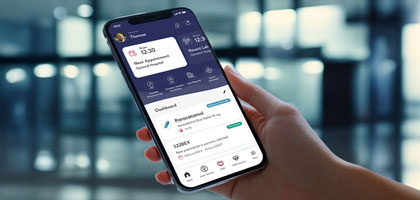
Insights
How Do You Promote Patient Empowerment?
How Do You Promote Patient Empowerment
As in any relationship, patient relations with healthcare providers require good communication and trust in order to achieve a common goal. For this reason, patient empowerment has become a necessity in today's healthcare services. In fact, health policies in some countries are implementing strategies to increase patient empowerment and get patients more involved in their own health care.
What is Patient Empowerment?
There are many definitions for patient empowerment. In general, Patient empowerment is a practice that encourages patients to become more actively involved in the services offered by healthcare providers. The purpose of patient empowerment is to help patients improve their self-awareness and self-care, while raising awareness that patients can play an equal role in health care decisions.
Why is Patient Empowerment Important?

Evaluation of health services naturally depends on patient outcomes. However, recently this assessment has changed. Health care evaluation began to be equated with patient satisfaction. This means that patients are demanding information from healthcare providers to provide them with better accessibility and to better understand the decisions made for their care processes.
If we examine this issue a little more closely, we can see that health outcomes and non-health parameters are very closely linked. Interacting with patients in a meaningful way helps them understand their own care and participate more proactively. This, in turn, increases treatment compliance and adherence, resulting in better health outcomes for patients and greater satisfaction with their healthcare providers.
In recent years, it has become a matter of debate whether patient empowerment is one of the determinants of better health care. All these discussions aside, patient empowerment enables patients to better interact with healthcare organizations. This means that patients trust healthcare institutions more and even use patient portals and other interaction platforms offered by healthcare institutions.
Patient Empowerment Improves Engagement
Patient empowerment is not just a concept related to health outcomes, it also improves interaction between healthcare organizations and patients. It encourages better communication and minimizes the chance of misdiagnosis. The success of patient interaction tools such as the Patient portal is determined only by the patient using the application. When patients can have a say in the decisions taken for their own health, they trust the doctor, health institution and health outcomes more. In this way, the patient agrees to use engagement tools such as patient portal.
How to Promote Patient Empowerment

• Encourage patients to update and share their medical information. Being able to share patients’ medication history – including an account of medications being taken, previous prescription details and any contraindications, would be helpful for you while also helping patients stay conscientious about their prescriptions.
• Persuade patients to update their allergies and previous health concerns. Patients may not always remember to provide you with a complete picture of their health, including information about all their allergies and previous health concerns. Encourage patients to update these details to help you make informed decisions about their care and prevent health complications.
• Convey shared information to patients from wearable devices. Tools like smartwatches allow patients to sync data from their wearable devices so that they can then share these vital data with their physicians.
• Improve remote care practices so patients can maintain their own health checkups. Tools like remote monitoring ensure health providers to engage and empower their patients by defining home care plans for patients with chronic illnesses. Patients update their health data periodically for review by their care providers.
• Enable patients to receive online counseling from the health institution. Allowing patients to ask questions online provides them with the right information about their health, as opposed to relying on information from online sources. These systems empower them to take the right decisions for their care.
• Encourage patients to use the video consultation method. Telemedicine has allowed patients to consult with their providers irrespective of geographical location. Setting up a telemedicine service helps patients with chronic diseases, senior citizens, and patients who may not be able to make it to their appointments.
• Educate patients to empower them. Patient education helps patients understand important aspects of their own health. Health providers being involved in educating their patients also has the added advantage of limiting treatment, which can have devastating results on patient wellness.
• Enable patients to make doctor appointments online. The online appointment system enables patients to take a more proactive role in their own health. In this way, patients do not have to wait in line and can make a doctor's appointment according to their convenience.
In addition, you can get detailed information about digital healthcare ecosystem by reading our article titled What Is Digital Healthcare Ecosystem? See you on different topics.
Source: https://bit.ly/2Sa5Qnv









